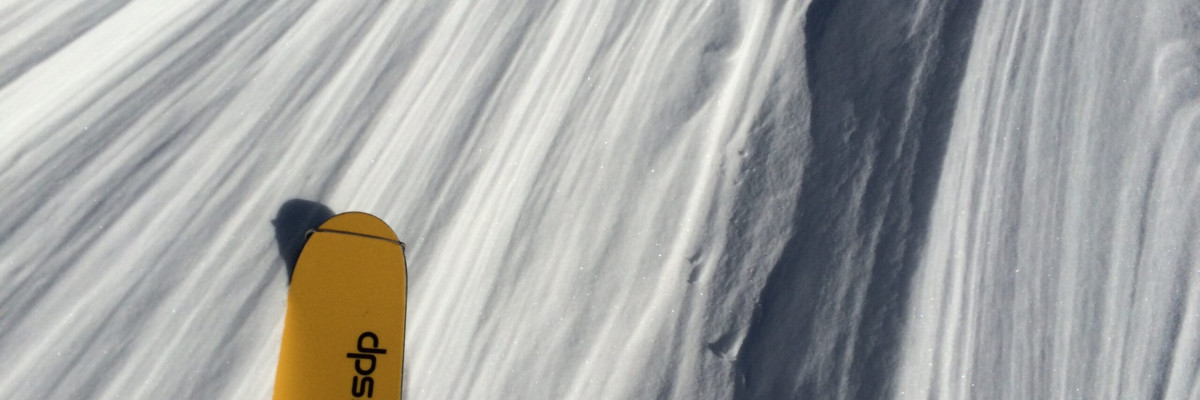The avalanche danger is CONSIDERABLE on wind loaded terrain steeper than 35 degrees. High winds earlier this week formed sensitive wind slabs on multiple aspects above 6000 feet. Natural avalanches are possible, human triggered avalanches are likely. Careful snowpack evaluation, cautious route finding and conservative decision making are essential under these conditions.
Hello! This is Steve Karkanen with the backcountry avalanche advisory for Friday, January 2, 2015. The danger rating expires at midnight and does not apply to operating ski areas.
Weather and Snowpack
Mountain temperatures this morning are in the teens and twenties with a northwest wind gusting to 27 mph at 8000 feet. Skies are cloudy and snow is expected later today.
Earlier this week, high winds hammered mountain peaks and ridges with 50 mph winds. North and east aspects were hit hard as the wind scoured these slopes and loaded others. On our Rattlesnake tour we saw a large recent avalanche on a south aspect rocky slope that was heavily cross loaded during the wind. The recent blast of wind and cold temperatures, recent avalanches and fracture propagation during stability testing are the factors keeping the danger rating elevated.
Any steep wind loaded area, including cross loaded terrain lower on a slope, is potentially dangerous right now.
The cold and clear weather has also created another weak layer on or just under the surface that will demand our attention during the next storm. There are also pockets where the wind stripped the snow down to the ground. These thin areas are prone to faceting and already have a weak structure (see profile below).
Conditions were less than ideal for travel and downright heinous for skiing yesterday. Overall stability has improved but the wind sculpted interesting patterns and left a few landmines on top and cross loaded slopes. We also remain concerned about the deeply weak layer we’ve been talking about for nearly a month now. It takes a lot of force but it snaps with energy when it fails. This is the layer that failed in the recent avalanche near Seeley Lake.
As it so clearly demonstrated last weekend, it can’t be trusted.
Weather Forecast and Avalanche Outlook
The Missoula Weather Service Office is forecasting more active weather with slightly warmer temperatures and a few inches of snow. By Saturday night, a series of wet systems will push into the area with up to a foot of mountain snow possible. 20-30 mph winds are possible as the front passes.
We have a weak snow surface and a deep persistent weak layer that gets touchy every time it snows. The avalanche danger will increase with heavy new snow and high wind.
Dudley will issue the next advisory on Tuesday, January 6.
























